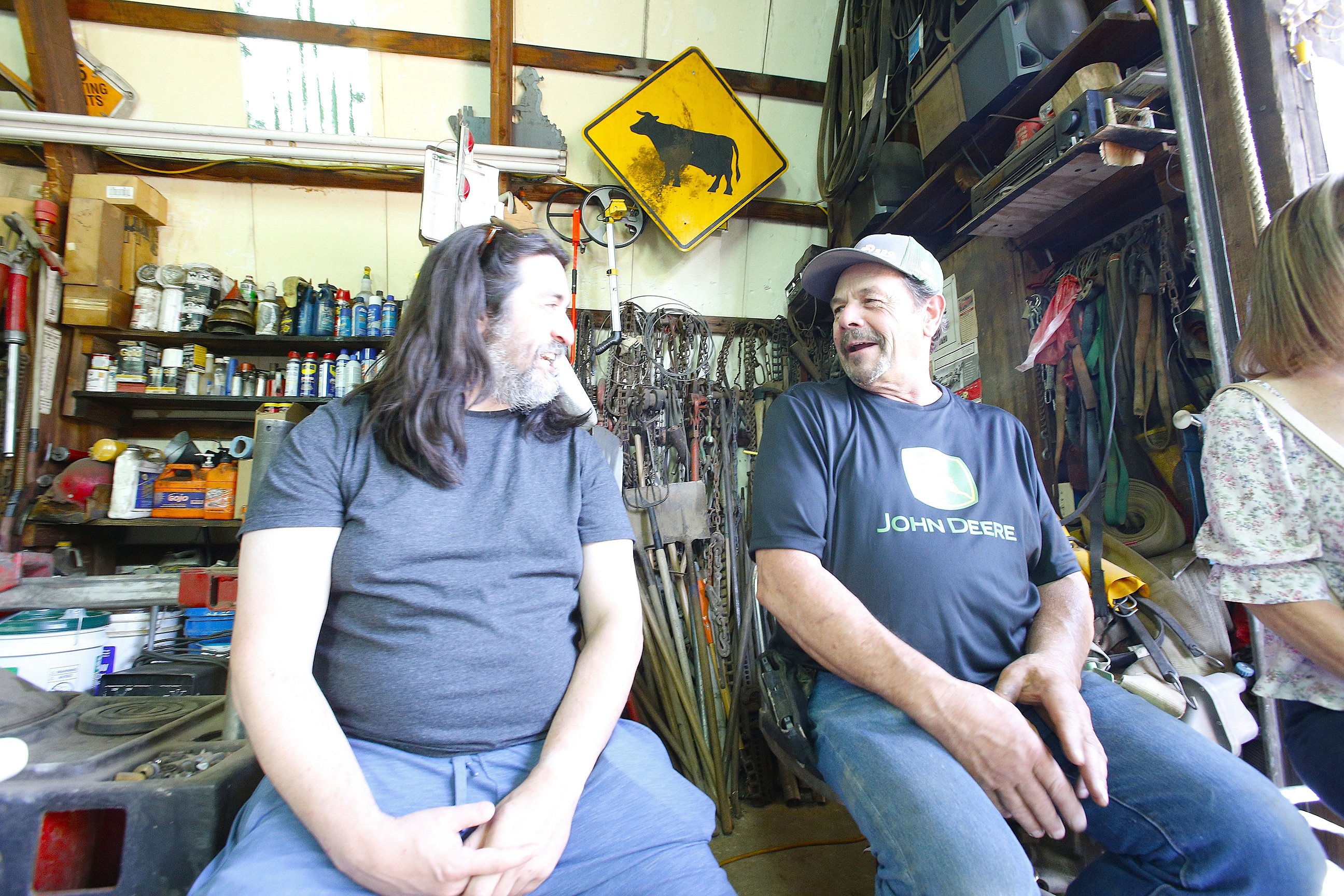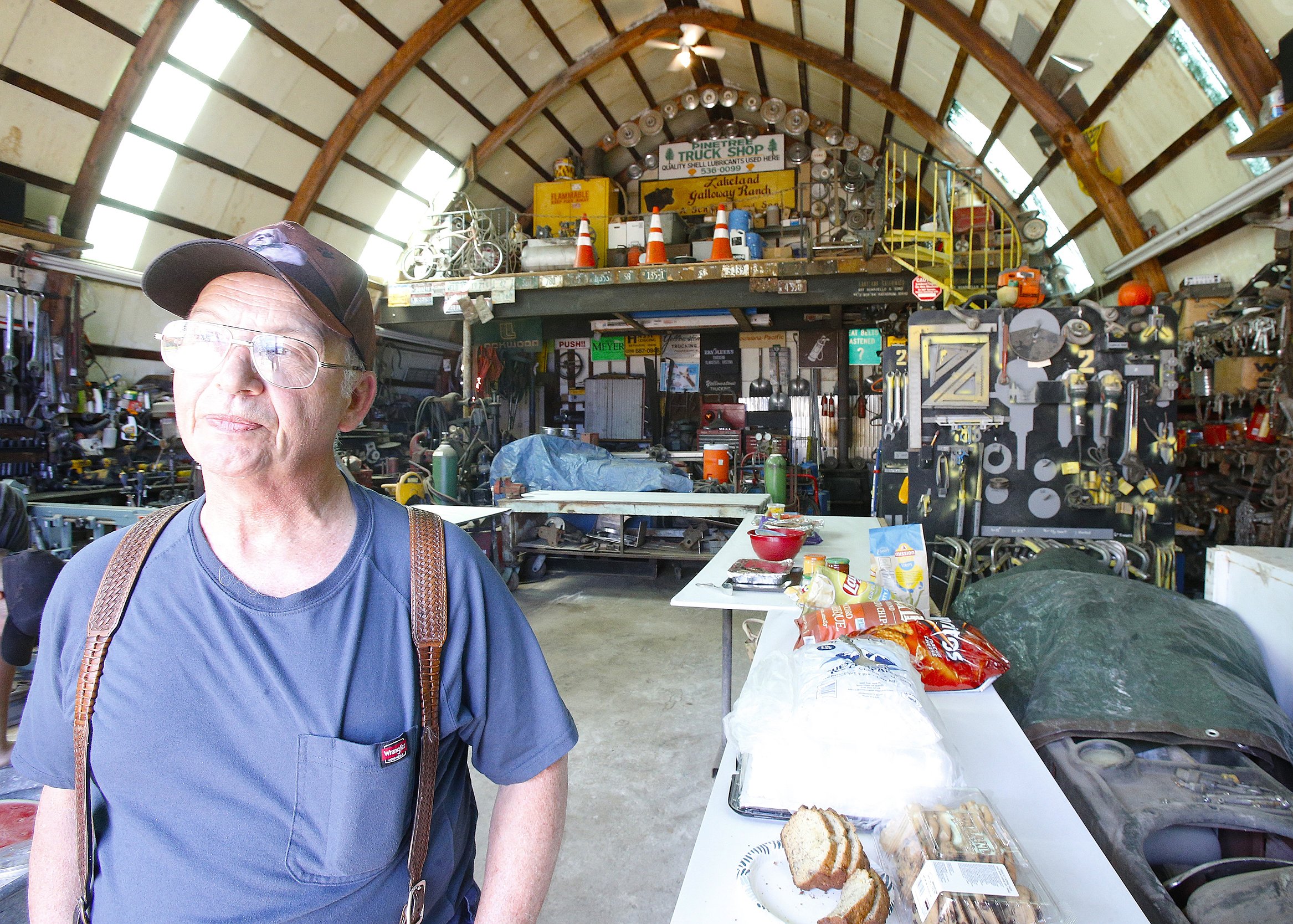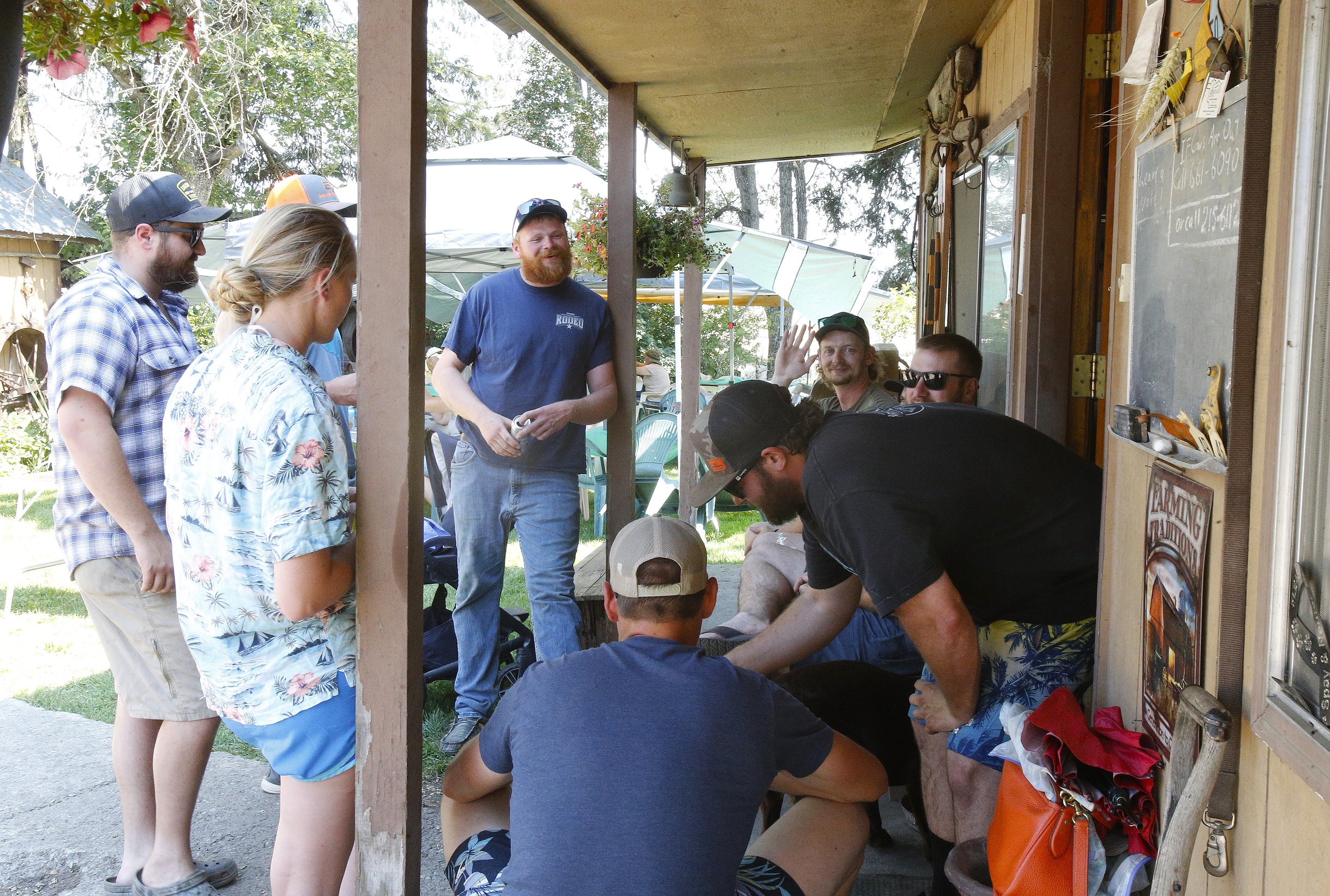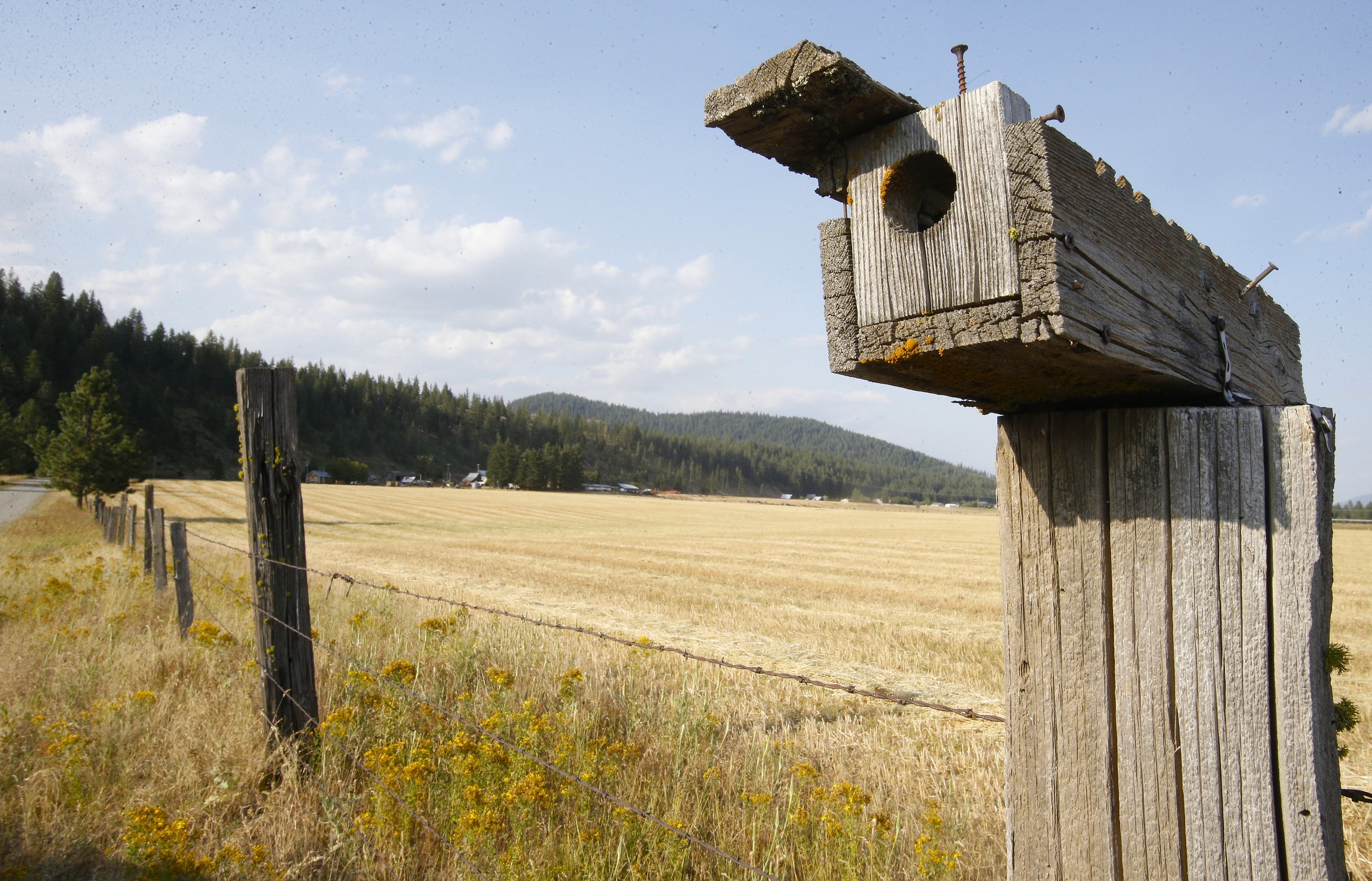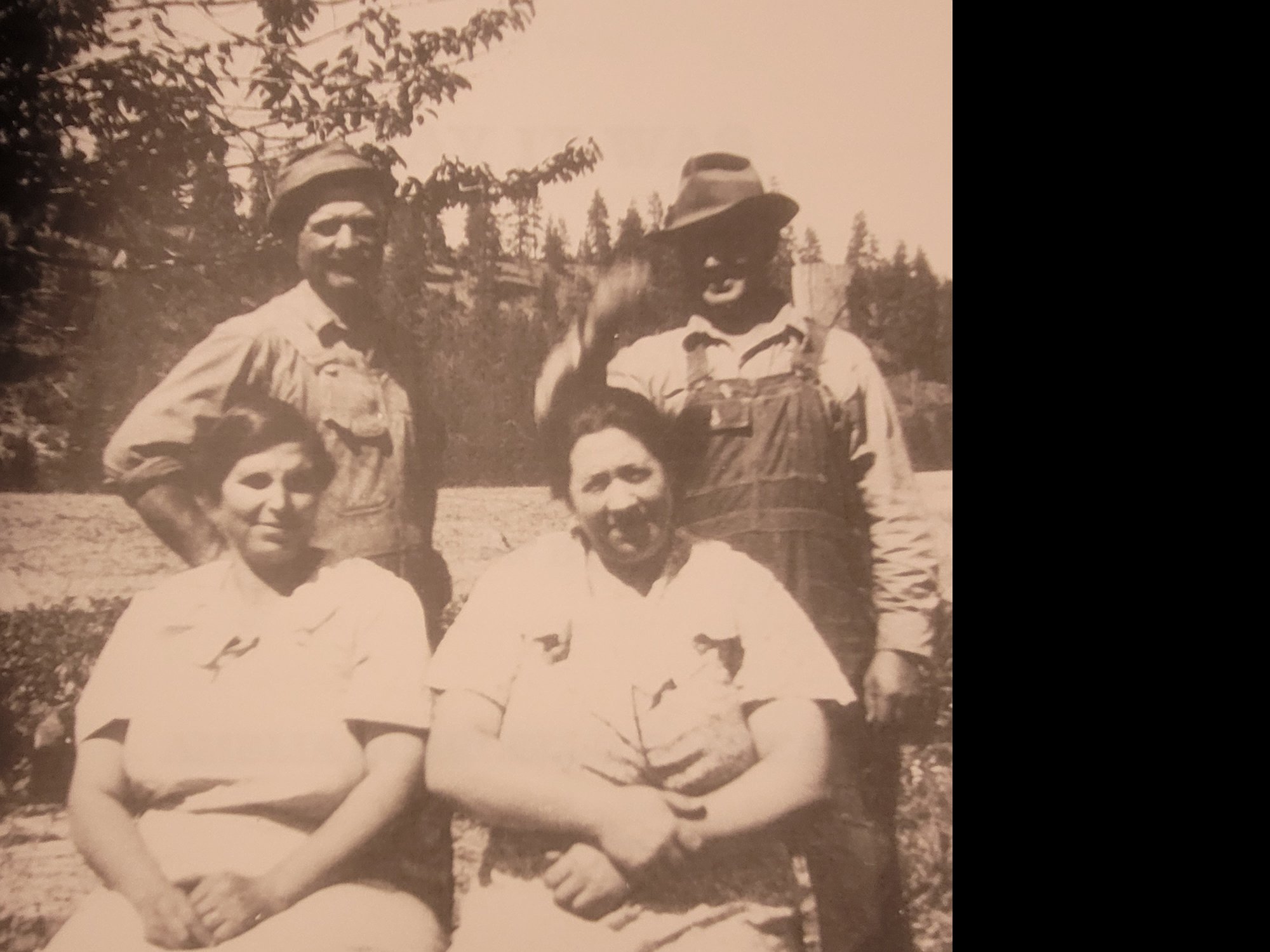As the Rathdrum Prairie is developed, Scarcellos stick to tradition
RATHDRUM — Moss grows on gray, weathered wooden fenceposts held up by rusting barbed wire along the dusty drive.
Black Angus cattle graze in shady patches, avoiding the intense July heat.
Laughter can be heard before people are seen beneath a blue tarp canopy, grilling brats and burgers, sipping Coors Banquets and telling tales — some tall, some true — of growing up in the country.
“Hey, how you doing?” Laurin Scarcello asks, greeting cousins and friends with hugs and handshakes. “Make yourself at home.”
The gathering of members of the Scarcello, Dingman, Miller, Brunner, Bonu, D'Ambrosia and Dempsey families happens every even year at the Scarcello ranch, where the family’s American dream first unfolded. The celebration is held to commemorate the continuation of a legacy that began when four Italian immigrant brothers sought better lives for their family and set down roots, of all places, on the Rathdrum Prairie.
From Italy to Idaho
Antonio (Tony), Francisco (Frank), Guiseppi (Joe) and Imppalito (Paul) Scarcello left their home village of Pedace, Italy, to establish new lives in the U.S.
Tony arrived in 1900. Frank came in 1904 after completing cavalry duty in Italy. Joe came in 1906 and Paul in 1909. Together they worked their way to Idaho where their older brothers in 1910 had purchased 160 acres a mile from Twin Lakes. Another 160 acres were purchased later and given to Joe and Paul in 1925 for services rendered. The parcels were separated by about 10 acres.
The Scarcello land and the 10 acres between had previously been cleared of all marketable timber, leaving countless stumps the family spent years removing.
Tony and Frank eventually received “mail order brides” Josephine and Angelina after the brothers' mother contacted two young women in Pedace who were willing to marry land-owning farmers. The brides arrived in rugged North Idaho in 1912, with no family and no English-speaking abilities. In “The Way It Was: The Scarcello Saga 1800-1988,” a bound tome of the family’s history written by L. Amelia Scarcello Garcea in the late 1980s, it says the ladies were sometimes found crying, and well-meaning neighbors could do nothing to comfort them because of the language barrier. Amelia was the daughter of Tony and Josephine.
“Can you imagine the bewilderment that engulfed them and the adjustments that followed?” Amelia wrote. “They had left a village of relatives and friends. Here, they had husbands they hardly knew and two young, unmarried brothers-in-law, Joe and Paul.”
Tony, Josephine, Frank, Angelina and Paul became American citizens Feb. 2, 1917. Joe and Paul both served in World War I. Joe gained U.S. citizenship Oct. 17, 1918, while serving at Camp Fremont, Calif.
Forming the farm
No running water, no electricity, an endless sea of stumps and ceaseless battles with gophers were among the first of many challenges the hard-working Scarcellos would face as they adapted to rural North Idaho life. They ate lots of potatoes and dandelion greens in those early years, as well as pork preserved with salt.
Water was hauled from Twin Lakes and stored in a cistern. In the winter, the women melted snow for domestic use. From 1917-1919, a 300-foot well was dug on the property. The original pumphouse still stands. With running water, life became easier.
Laurin still lives in the 1927 house where he grew up. In the field beyond are the remnants of an original log cabins the homesteaders built.
Cousin Bill Miller who lives near Oldtown said his mom and aunt were born in that old log house. He remembers visiting the ranch as a kid and has been to the summer gathering many times.
"This was a big deal for the old-timers," Miller said. "It meant staying connected. They were really bonded because they were foreigners. They bonded with each other."
Farming in the early 20th century was extremely exhausting, Amelia wrote in the book.
"The land had to be plowed with a single-blade plow that was pulled by horses," she wrote. "The man behind the plow walked. Many of the other chores also depended on repairing. Uncle Frank, who was mechanically minded, did the repairs. It was essential to have this ability to do one's own work."
Years later, the horses and plows were replaced with tractors and cars. Babies were born and raised, the family expanded, and the Scarcellos carved out their place in the Gem State.
Ranch reminiscences
What prompted the biennial celebrations the third Saturday in July was the Scarcello ranch's 100th anniversary in 2010.
"We were going to throw a party that would have also been my dad’s 90th birthday party, but unfortunately he didn’t make it to 90,” Laurin said. “We threw a ranch party anyway to celebrate 100 years of picking rock and fixing fence, and we had about 300 people that first year.”
Ian D'Ambrosia, whose grandmother was Laurin's aunt, worked the grill with cousin Anthony Scarcello, Laurin's son. D'Ambrosia said this place means a lot to him.
"I actually took my first walking steps on the farm," D'Ambrosia said over the sound of sizzling bratwursts. "I grew up coming out here in the summers, ever since I was a little baby. It's always been a special place. It was way more rural; Rathdrum is growing so much. There's actually crossing guards at the train crossings where there didn't used to be."
He said some of his fond memories are of the Scarcello women bringing authentic Italian fare to family gatherings.
"They would speak the dialect with each other," he said. "Someone would go hoarse because they hadn't spoken it in so long. Sometimes they'd be a little catty with each other, all these sisters and whatnot. I always enjoyed that as a kid, just watching the relatives."
Pat Dingman of Coeur d’Alene, whose mom was also born in the old cabin, shared memories of the cheese-making days.
“I just remember cheese hanging from the front porch, back porch, there was balls of cheese,” he said. “They made a lot of cheese. That’s all I remember, I was probably 5, 6 years old, and I just remember cheese hanging everywhere.”
'It can be personal, it can be historical, but it has to be viable'
The Scarcellos own more than 600 acres of land and work about 1,500 acres between what is owned and leased. Laurin said in the summer, they frequently receive letters or people will stop by to make offers to buy the land. At the same time, farms and ranches all around them are being bought and developed.
Dennis Dingman praised his cousin, Laurin, for holding his ground.
“I’m glad that he’s going to keep it as one ranch,” Dennis said. “He’s fighting to keep it from being sold, with all the realtors, developers biting at him.”
However, the ranch must be profitable to be sustainable.
“We all struggle with that. If it’s not viable, it’s not sustainable,” Laurin said. “You know the old saying, ‘You can’t eat the scenery?’ Well, that’s true.”
Ranch work is nonstop and the days are long.
“The coffee’s on before 5,” Laurin said. “I’m out the door at 6ish and you run it as long as there’s daylight. I average like three days off a year.”
Hot, dry weather creates further hardships for farmers.
“We’re in drought status. That’s four droughts in nine years,” Laurin said. “Two of those were mega droughts.”
But as he works the land with his children, Laurin is of the same mindset as his father, Arthur Scarcello, who worked the land before him.
“My dad said this — ‘I’m just the caretaker and you’ll be the next caretaker, because we don’t own any of this,’” Laurin said. “If the only thing this does is instill work ethic in the next generation, that’s good enough, but it still takes money to pay the bills.”
When asked if he thinks his forefathers would be proud of what has been built where their story began, Laurin said he believes so.
“I think they’d be proud that it’s still here. It’s worth a criminal amount of money, but how do you put a price on your heritage?
“It’s worth more than money," he said. "That’s the best way I could put it.”
SIDEBAR
Once a prairie – as it was known.
First teams of horses – then tractors droned.
Dry land farms – then water came.
Seems irrigation – changed the game.
Then new technology – and GPS.
Certified seeds – best crop yet.
Nature’s bounty – filled the horn.
Harvested crops – like sheep are shorn.
Progress came – and people too.
Way lots more – then two by two.
Room at first – for this and that.
Developers’ wallets – kept getting fat.
Now it’s crowded – to say the least.
Growth it seems – fuels the beast.
Farmers left – can't expand.
Cows can’t pay – the price of land.
Open space – that fed a family.
Was traded for – money's candy.
People yearned – for what was lost.
Tranquil scenes – from summer to frost.
Time slipped by – political debate.
Of what to do – until too late.
Pocket parks – a trail or two.
Is all that’s left – and stories too.
Of a prairie – vast and wide.
Room for all – to seek and hide.
It seemed too big – too big to fail.
But farmers warned – to no avail.
The airports there – wastewater too.
That open space – now sewage lagoons.
Ice age floods – built all this.
But progress paved – over bliss.
— By Laurin Scarcello








